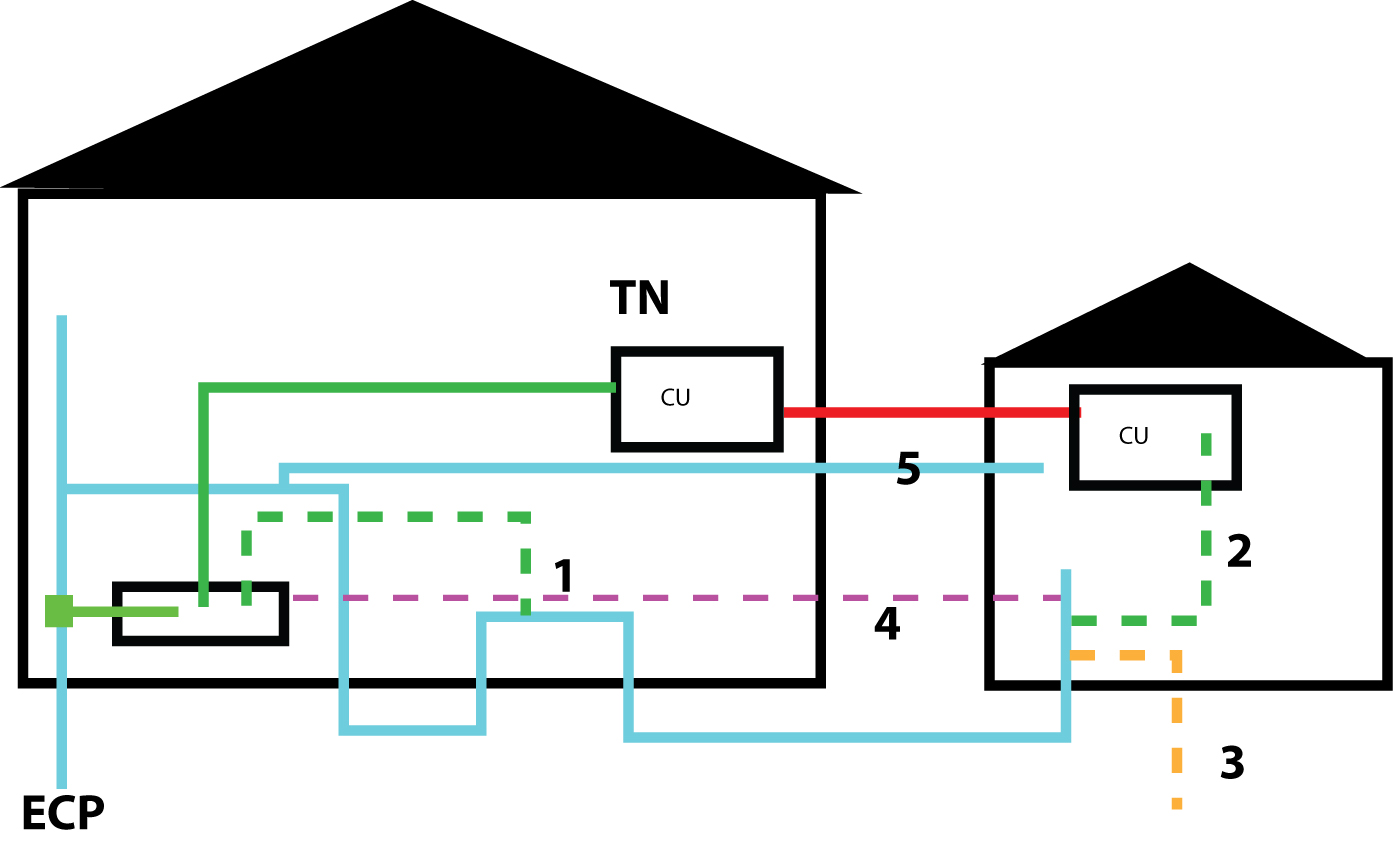A metal water pipe enters the building , Its a Extraneous Conductive part (ECP) so needs Main protective bonding to the MET.
That same pipe, has a branch off it which then goes back under the floor (buried) and re appears in another room in the same house. (1) Does the second appearance of the pipe also need bonded back to the MET?
or would a supplementary bond be correct?
This pipe then goes back under ground to an out building which has a sub board powered from the main house.
This same pipe appears in the out building,
Should that pipe be protected by a supplementary bond (2) a TT earth (3) or A MPB (4)
Would it still be an Extraneous CP if it did not go under ground? (5)
Basically as it only travels through air, it can't pick up a potential?
and would that be a TT SPB or a MPB
Hope that makes some sense
Thanks
That same pipe, has a branch off it which then goes back under the floor (buried) and re appears in another room in the same house. (1) Does the second appearance of the pipe also need bonded back to the MET?
or would a supplementary bond be correct?
This pipe then goes back under ground to an out building which has a sub board powered from the main house.
This same pipe appears in the out building,
Should that pipe be protected by a supplementary bond (2) a TT earth (3) or A MPB (4)
Would it still be an Extraneous CP if it did not go under ground? (5)
Basically as it only travels through air, it can't pick up a potential?
and would that be a TT SPB or a MPB
Hope that makes some sense
Thanks


